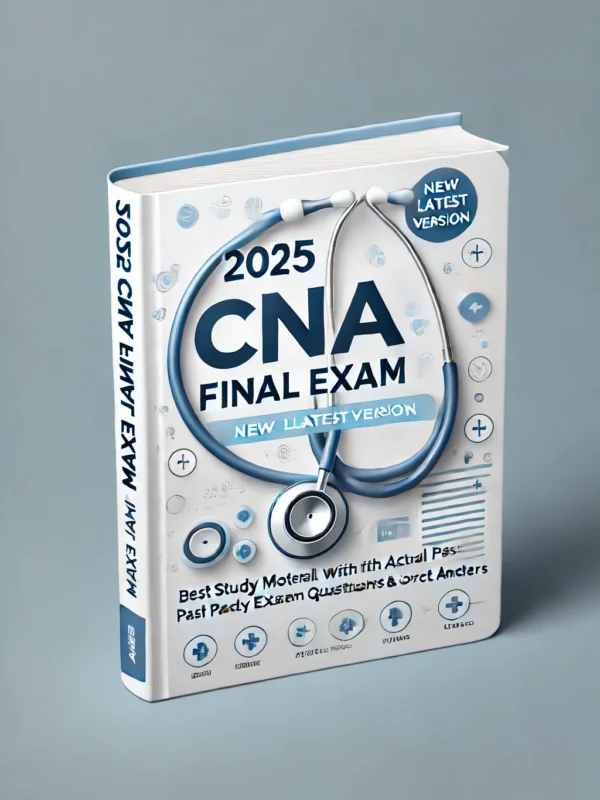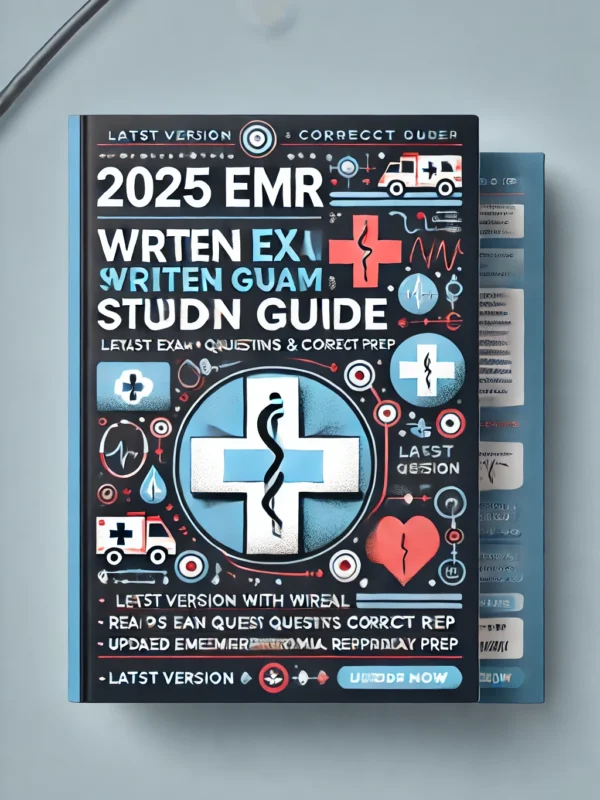Elevate your preparation with the Club Pilates Written Exam 2024 and Practice Questions Study Guide, the definitive resource for aspiring Pilates instructors aiming to excel in their certification journey. This new version, updated for 2024, delivers a robust collection of accurate, expert-verified questions and answers to ensure a guaranteed pass with a Graded A outcome. Tailored to the latest Club Pilates written exam standards, this guide dives deep into essential topics, including Pilates principles, anatomy, biomechanics, equipment usage (Reformer, Cadillac, Springboard, and Chair), client safety protocols, and teaching strategies for diverse populations. Each practice question is accompanied by detailed explanations, covering critical concepts like proper alignment, movement sequencing, and modifications for conditions such as pregnancy, hip replacements, or over-kyphotic postures. The guide also includes practical scenarios to assess client readiness, such as ensuring a stable pelvis before jumping on the Jumpboard or mastering the Roll Over and Teaser before attempting the Boomerang. Perfect for both beginners and seasoned practitioners, this study material provides the best tools to confidently pass the Club Pilates written exam and launch a successful career in Pilates instruction. Secure your copy now and take the first step toward certification success!
Preview
1. Bridge with knee extensions is a beginner move because it introduces a longer lever angle
on the low back.
• A) True
• B) False (Correct Answer)
Correct Answer: B) False
Rationale: Bridge with knee extensions is not considered a beginner move because the longer
lever angle increases the load on the lower back, requiring more control and strength.
2. Mermaid cannot be modified and should not be done unless the client is ready.
• A) True
• B) False (Correct Answer)
Correct Answer: B) False
Rationale: The Mermaid can be modified to suit various client limitations, making it accessible
even for those with less flexibility or strength.
3. Why would you place the leg straps above your client’s knees during the feet-in-straps
series?
• A) To increase the range of motion in the hip joint
• B) To prevent knee strain
• C) If your client needed a smaller range of motion in the hip joint (Correct Answer)
• D) To improve balance
Correct Answer: C) If your client needed a smaller range of motion in the hip joint
Rationale: Placing the straps above the knees limits the range of motion, which can be useful
for clients with limited hip mobility or those needing more control.
4. What is the best way to evaluate the range of motion (ROM) of the ankles?
• A) Toe pointing and flexing
• B) Ankle rotations
• C) Heels lower and lift (Correct Answer)
• D) Calf raises
Correct Answer: C) Heels lower and lift
Rationale: Heels lower and lift is a common exercise to assess the range of motion and flexibility
of the ankle joint.
5. What are the contraindications for Swan on the Reformer?
• A) Knee replacement, shoulder impingement, arthritis
• B) Pregnancy, shoulder replacement, slipped disc, osteoporosis (Correct Answer)
• C) Scoliosis, ankle injury, carpal tunnel
• D) High blood pressure, asthma, weak wrists
Correct Answer: B) Pregnancy, shoulder replacement, slipped disc, osteoporosis
Rationale: Swan on the Reformer requires spinal extension, which is contraindicated for
individuals with certain conditions like pregnancy, shoulder replacement, or osteoporosis due to
the strain on the spine.
on the low back.
• A) True
• B) False (Correct Answer)
Correct Answer: B) False
Rationale: Bridge with knee extensions is not considered a beginner move because the longer
lever angle increases the load on the lower back, requiring more control and strength.
2. Mermaid cannot be modified and should not be done unless the client is ready.
• A) True
• B) False (Correct Answer)
Correct Answer: B) False
Rationale: The Mermaid can be modified to suit various client limitations, making it accessible
even for those with less flexibility or strength.
3. Why would you place the leg straps above your client’s knees during the feet-in-straps
series?
• A) To increase the range of motion in the hip joint
• B) To prevent knee strain
• C) If your client needed a smaller range of motion in the hip joint (Correct Answer)
• D) To improve balance
Correct Answer: C) If your client needed a smaller range of motion in the hip joint
Rationale: Placing the straps above the knees limits the range of motion, which can be useful
for clients with limited hip mobility or those needing more control.
4. What is the best way to evaluate the range of motion (ROM) of the ankles?
• A) Toe pointing and flexing
• B) Ankle rotations
• C) Heels lower and lift (Correct Answer)
• D) Calf raises
Correct Answer: C) Heels lower and lift
Rationale: Heels lower and lift is a common exercise to assess the range of motion and flexibility
of the ankle joint.
5. What are the contraindications for Swan on the Reformer?
• A) Knee replacement, shoulder impingement, arthritis
• B) Pregnancy, shoulder replacement, slipped disc, osteoporosis (Correct Answer)
• C) Scoliosis, ankle injury, carpal tunnel
• D) High blood pressure, asthma, weak wrists
Correct Answer: B) Pregnancy, shoulder replacement, slipped disc, osteoporosis
Rationale: Swan on the Reformer requires spinal extension, which is contraindicated for
individuals with certain conditions like pregnancy, shoulder replacement, or osteoporosis due to
the strain on the spine.












Reviews
There are no reviews yet.